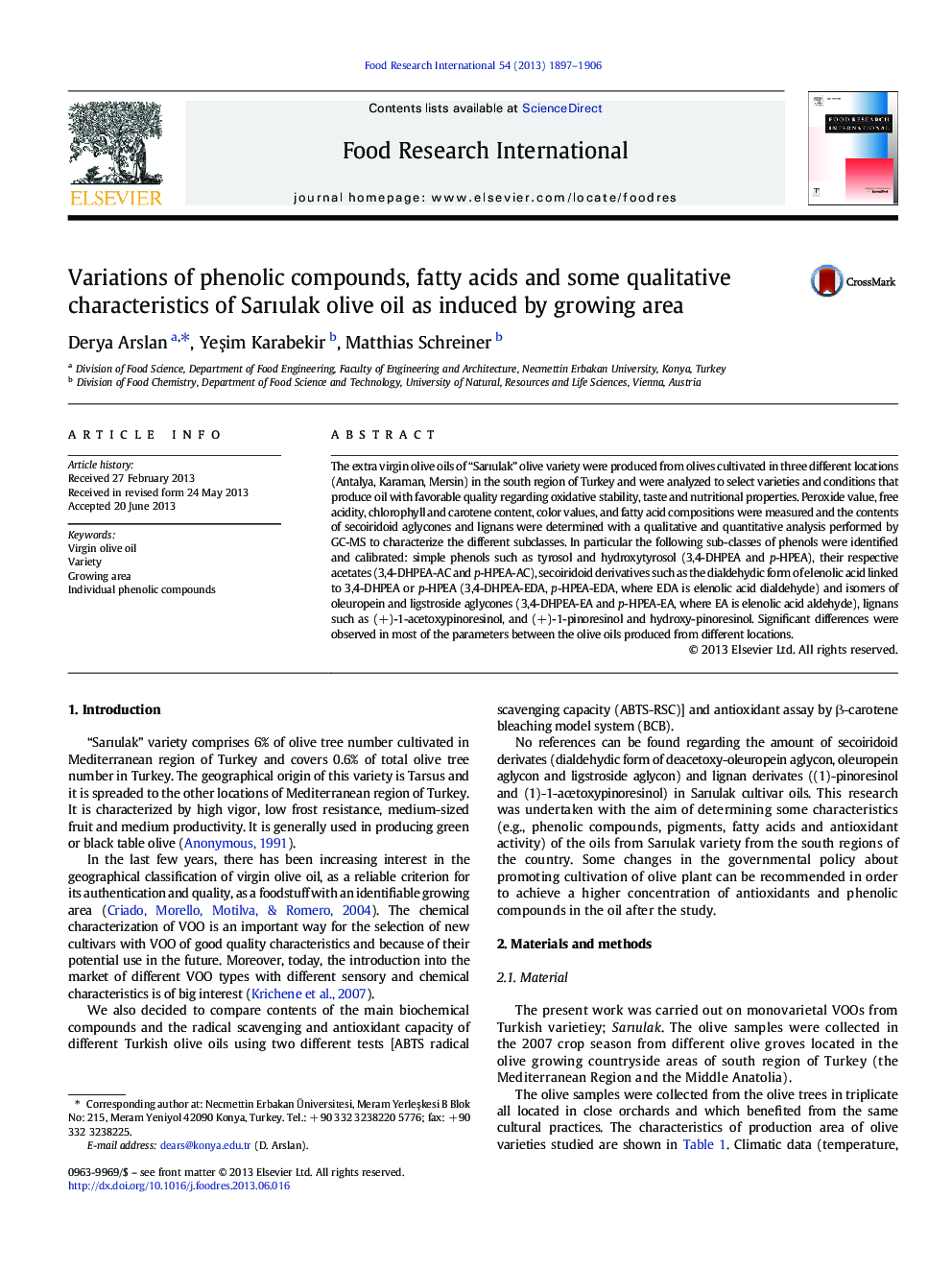| کد مقاله | کد نشریه | سال انتشار | مقاله انگلیسی | نسخه تمام متن |
|---|---|---|---|---|
| 6397481 | 1330675 | 2013 | 10 صفحه PDF | دانلود رایگان |

- Phenolic content of olive oil is more related to the rainfall than altitude.
- H-tyrosol, pinoresinol, apigenin, 3,4-DHPEA-EDA show positive correlation with TEAC.
- Olive oils with higher amounts of total secoiridoids show high antioxidant activity.
The extra virgin olive oils of “Sarıulak” olive variety were produced from olives cultivated in three different locations (Antalya, Karaman, Mersin) in the south region of Turkey and were analyzed to select varieties and conditions that produce oil with favorable quality regarding oxidative stability, taste and nutritional properties. Peroxide value, free acidity, chlorophyll and carotene content, color values, and fatty acid compositions were measured and the contents of secoiridoid aglycones and lignans were determined with a qualitative and quantitative analysis performed by GC-MS to characterize the different subclasses. In particular the following sub-classes of phenols were identified and calibrated: simple phenols such as tyrosol and hydroxytyrosol (3,4-DHPEA and p-HPEA), their respective acetates (3,4-DHPEA-AC and p-HPEA-AC), secoiridoid derivatives such as the dialdehydic form of elenolic acid linked to 3,4-DHPEA or p-HPEA (3,4-DHPEA-EDA, p-HPEA-EDA, where EDA is elenolic acid dialdehyde) and isomers of oleuropein and ligstroside aglycones (3,4-DHPEA-EA and p-HPEA-EA, where EA is elenolic acid aldehyde), lignans such as (+)-1-acetoxypinoresinol, and (+)-1-pinoresinol and hydroxy-pinoresinol. Significant differences were observed in most of the parameters between the olive oils produced from different locations.
Journal: Food Research International - Volume 54, Issue 2, December 2013, Pages 1897-1906